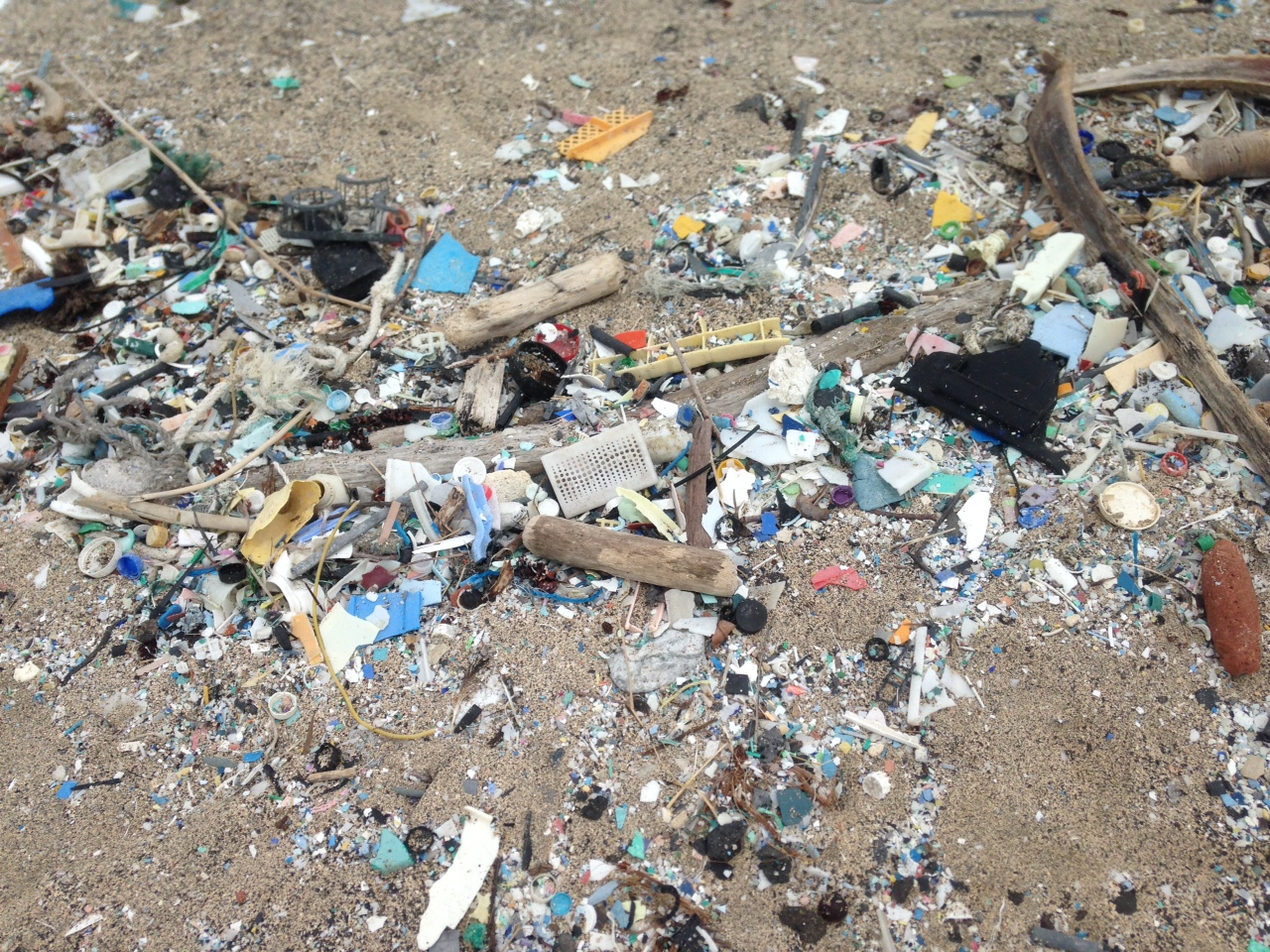Engineering Students Create Solution for Hawai‘i’s Microplastics Problem
Published on by Kim van Arkel, Scientific Advisor in Association / NGOs
Twelve engineering students at the University of Sherbrooke in Quebec, Canada, have worked with Hawai‘i Wildlife Fund to design and construct HoolaOne, a prototype machine to remove small pieces of plastic marine debris from beaches.
HWF, with the help of countless volunteers, has been cleaning the coastline near Kamilo Point in Ka‘ū on Hawaiʻi Island for 15 years and just reached a milestone—recovering 500,000 pounds of plastic, including bundles of nets and line.
However, it is impossible to collect everything and plastic never goes away, it just breaks down into smaller and smaller pieces. Microplastic debris is the most difficult to collect and remove from the beach because it takes so much time.

Microplastics on a Hawaiian beach. PC: M. Lamson/Hawai‘i Wildlife Fund.
“Two years ago, this group of engineering students from the University of Sherbrooke approached us and asked what they might do to help with our marine debris recovery work,” Bill Gilmartin, HWF’s research director, said. “I suggested they tackle the problem of removing small plastic pieces from beach sand and they took on the challenge as a class project.”
HWF sent them pictures of the problem and shipped them boxes of plastic-laden beach sand and they went to work.
“We discussed as many of the potential problems as we could think of, like rocks and pieces of wood in the sand, access to cleanup sites and the varied slopes of beaches,” Gilmartin said.
The students’ invention, HoolaOne, was specifically designed to separate very small microplastic pieces up to 2 inches in diameter from the beach sand.
The engineering students have been presented several awards by Canadian groups and have been featured in numerous media events for their work on this project.
“We just heard from the students that the prototype is ready for shipping and field testing at Kamilo,” Gilmartin said. “And ideally, some of the engineering students would come to Hawai‘i Island in February to work with HWF team members to field test the prototype and make any adjustments or modifications needed to fine tune and ensure the machine’s highest performance.”
The students have already raised over $70,000 (Canadian) to design and build HoolaOne. Now, HWF needs to raise about $15,000 to bring the machine and students to Hawai’i.
“We are seeking donations from individuals and local business throughout Hawai‘i to support this final push to bring this microplastics beach cleanup machine to Hawai‘i in January,” Gilmartin said. “Please make a tax-deductible contribution to HWF today and let us know that you support these University of Sherbrooke students and you want to be part of the solution to recover plastics from our beaches to protect native wildlife.”
This collaborative project between HWF and University of Sherbrooke students and hundreds of donors was designed to tackle the very difficult problem of cleaning microplastics from Hawai‘i beaches. They hope future models can be used to clean beaches around the world to reduce wildlife losses to plastic ingestion.
HWF also suggests you can help by choosing to reduce the amount of single-use plastic items that you consume and dispose of daily.
More information about HWF is available at www.wildhawaii.org.
More information and a video of the Sherbrooke effort are available online.
Source: By Big Island Now
Media
Taxonomy
- Beach Cleaning
- plastic debris
- microplastics
- Beat Plastic Pollution